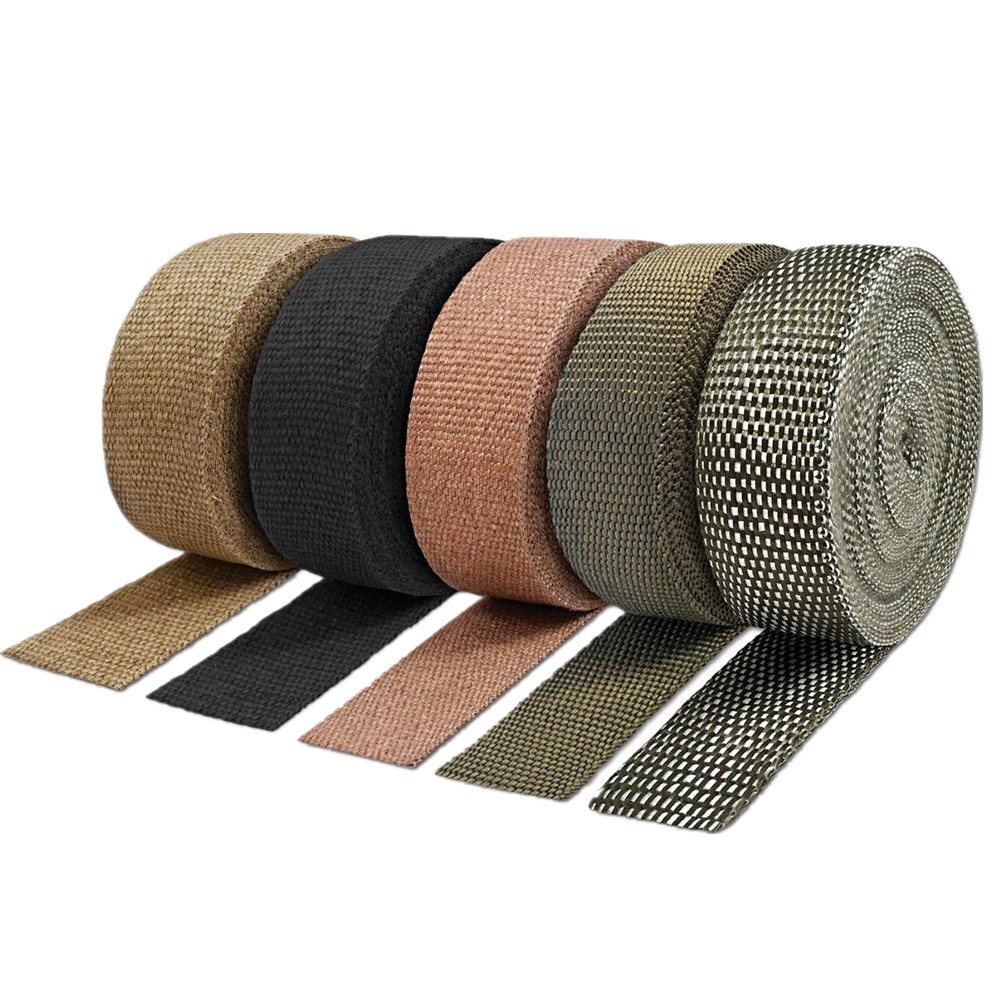Общие вопросы о кассету изоляции выхлопных газов
Feb 05,2025
Каковы основные функции выхлопной ленты?
- Повышение производительности двигателя: Поддерживая высокую температуру выхлопной системы, она помогает способствовать потоку выхлопных газов и повышает эффективность двигателя
- Защитите окружающие компоненты: Снижает тепловое излучение, чтобы защитить близлежащие провода, шланги и другие чувствительные компоненты от теплового повреждения
- Повысить безопасность: Понижает температуру в отсеке двигателя, снижая риск пожара
Какие виды транспортных средств подходят для выхлопной ленты?
Выхлопная лента широко используется для различных транспортных средств, в том числе:
- Автомобили: Обычно используется в высокопроизводительных автомобилях и гоночных транспортных средствах для повышения эффективности выхлопных газов
- Мотоциклы: Часто применяется к системам выхлопных газов для мотоциклов для повышения производительности и защиты компонентов
- Грузовики и тяжелая техника: Используется в промышленном оборудовании и транспортных транспортных средствах для повышения долговечности и безопасности
Как установлена выхлопная лента?
Следуйте этим шагам для установки выхлопной ленты:
- Подготовка: Очистите поверхность выхлопной трубы, гарантируя, что она свободна от масла и пыли
- Увлажняйте ленту: Увлажните выхлопную ленту, чтобы упростить надежное обертывание выхлопной трубы
- Оберните выхлопную трубу: Начните с одного конца выхлопной трубы и равномерно оберните изоляционную ленту, гарантируя, что каждое перекрытие составляет около 1/4 дюйма
- Закрепить ленту: Используйте связки на молнии из нержавеющей стали, чтобы закрепить концы ленты, чтобы убедиться, что она остается на месте
Каковы уровни температурной стойкости узоля выхлопной ленты?
Температурная стойкость выхлопной ленты зависит от его материала:
- Стекло из стекловолокна выхлопной изоляционной ленты: Обычно сопротивляется температуре до 600 ° C
- Керамическая выхлопная лента: Может противостоять температуре до 1250 ° C
- Базальтовая изоляционная лента: Сопротивляется до 815 ° C, с пиковой толерантностью к температуре, достигающей 1095 ° C
Каков процесс обслуживания и очистки для выхлопной ленты?
Лента изоляции выхлопных газов обычно требует минимального обслуживания, но должна быть проверена при следующих обстоятельствах:
- Регулярные проверки: Периодически проверяйте состояние выхлопной ленты, чтобы убедиться, что нет повреждений или ослабления
- Уборка: При необходимости аккуратно отчистите поверхностную пыль мягкой щеткой Избегайте использования химических чистящих средств, которые могут повредить материал
- Замена: Если лента показывает значительный износ или повреждение, ее следует быстро заменить для поддержания оптимальной производительности
С помощью выхлопная лента Правильно, вы можете эффективно повысить производительность транспортных средств, защитить критические компоненты и повысить общую безопасность.

